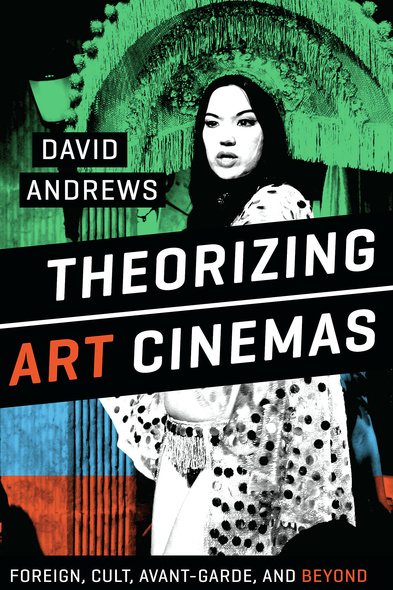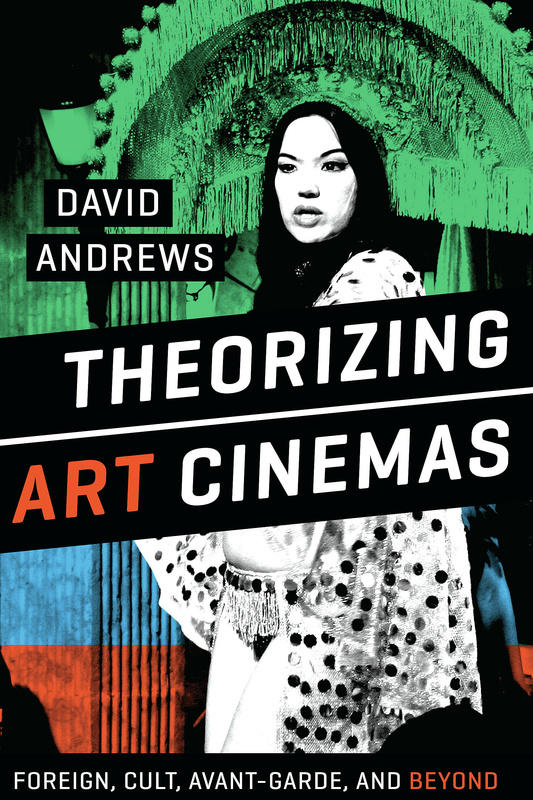Theorizing Art Cinemas
Foreign, Cult, Avant-Garde, and Beyond
The term “art cinema” has been applied to many cinematic projects, including the film d’art movement, the postwar avant-gardes, various Asian new waves, the New Hollywood, and American indie films, but until now no one has actually defined what “art cinema” is. Turning the traditional, highbrow notion of art cinema on its head, Theorizing Art Cinemas takes a flexible, inclusive approach that views art cinema as a predictable way of valuing movies as “art” movies—an activity that has occurred across film history and across film subcultures—rather than as a traditional genre in the sense of a distinct set of forms or a closed historical period or movement.
David Andrews opens with a history of the art cinema “super-genre” from the early days of silent movies to the postwar European invasion that brought Italian Neorealism, the French New Wave, and the New German Cinema to the forefront and led to the development of auteur theory. He then discusses the mechanics of art cinema, from art houses, film festivals, and the academic discipline of film studies, to the audiences and distribution systems for art cinema as a whole. This wide-ranging approach allows Andrews to develop a theory that encompasses both the high and low ends of art cinema in all of its different aspects, including world cinema, avant-garde films, experimental films, and cult cinema. All of these art cinemas, according to Andrews, share an emphasis on quality, authorship, and anticommercialism, whether the film in question is film festival favorite or a midnight movie.
Andrews remains acutely attuned to both potential criticisms in his logic by addressing them head-on, while never sliding into overtly academic-speak or rhetoric that could obscure his points, which makes Theorizing Art Cinemas a thrilling revelation from front to back….Andrews provides readers not just with an intricate explanation for various art cinemas, but how such scholarship can best be performed going forward….Andrews clears up complicated, much-debated issues with relative ease.
…a thought-provoking amalgamation of relevant theories and an interdisciplinary perspective. This book seems bound to inspire new research, which should move beyond the usual art-cinema suspects of auteurism and the avant-garde.
David Andrews is an independent scholar who has published widely on issues related to art cinema and cult cinema. He is the author of Soft in the Middle: The Contemporary Softcore Feature in its Contexts.
- Preface
- Acknowledgments
- Introduction: Correcting Art Cinema’s Partial Vision
- Part One: Art, Auteurism, and the World
- Chapter One. Art as Genre as Canon: Defining “Art Cinema”
- Chapter Two. No Start, No End: Auteurism and the Auteur Theory
- Chapter Three. From “Foreign Films” to “World Cinema”
- Part Two: Formats and Fetishes
- Chapter Four. Recovery and Legitimation in the Traditional Art Film
- Chapter Five. Losing the Asterisk: A Theory of Cult-Art Cinema
- Chapter Six. Revisiting “The Two Avant-Gardes”
- Chapter Seven. Sucking the Mainstream: A Theory of Mainstream Art Cinema
- Part Three: Institutions and Distributions
- Chapter Eight. Re-integrating Stardom ( . . . or Technology or Reception or . . . )
- Chapter Nine. Art Cinema as Institution, Redux: Art Houses, Film Festivals, and Film Studies
- Chapter Ten. Art Cinema, the Distribution Theory
- Epilogue. Beyond, Before Cinephilia
- Notes
- Filmography
- Bibliography
- Index






